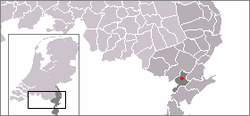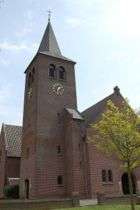Beegden
Beegden (Limburgish: Bieëgdje) is a town in the Dutch province of Limburg. It is a part of the municipality of Maasgouw, and is located about 6 km west of Roermond. In 2001, Beegden had 1703 inhabitants. The built-up area of the town was 0.48 km², and contained 667 residences.[1]
Beegden Bieëgdje (Limburgish) | |
|---|---|
 | |
| Country | Netherlands |
| Province | Limburg |
| Municipality | Maasgouw |
| Population (1 January 2006) | 1,800 |
| Major roads | N273, Lateraalkanaal, Maas |

Until 1991, Beegden was a separate municipality. During that year the town became part of the municipality of Heel en Panheel. In 2007 the municipality of Heel en Panheel, including Beegden, became part of the new municipality of Maasgouw. The town currently has about 1800 inhabitants. During the past few years tourism has developed in Beegden, the key attractions of the town are the church, the seventeenth-century house Huis Nederhoven and the St. Lindert windmill. The last underwent a major restoration in 2000 and can be visited free of charge every Wednesday and Saturday.
Born in Beegden
- Annemiek Derckx (born 1954), Dutch canoer who twice won a bronze medal at the Summer Olympics
References
- Statistics Netherlands (CBS), Bevolkingskernen in Nederland 2001 "Archived copy". Archived from the original on 2006-03-19. Retrieved 2007-01-24.CS1 maint: archived copy as title (link). Statistics are for the continuous built-up area.